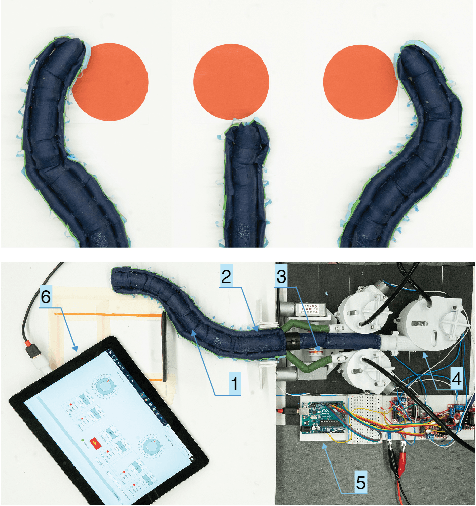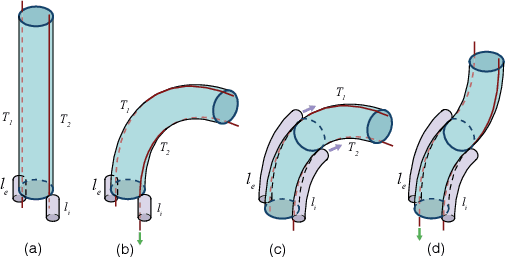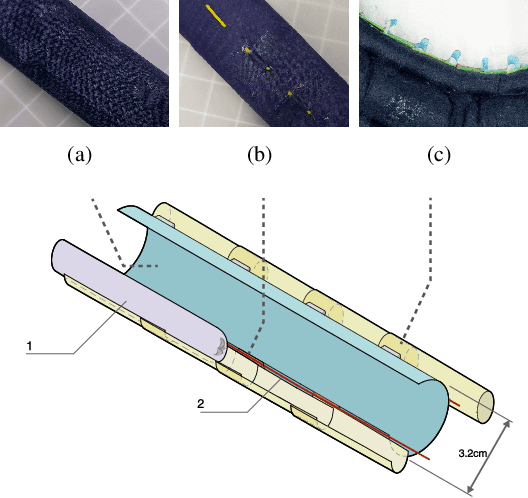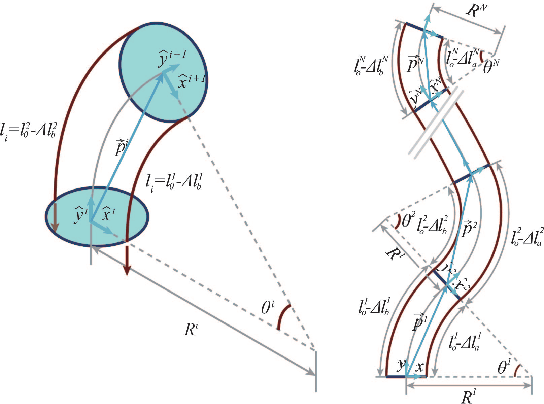Ruotong Zhang
A Dexterous Tip-extending Robot with Variable-length Shape-locking
Mar 20, 2020



Abstract:Soft, tip-extending "vine" robots offer a unique mode of inspection and manipulation in highly constrained environments. For practicality, it is desirable that the distal end of the robot can be manipulated freely, while the body remains stationary. However, in previous vine robots, either the shape of the body was fixed after growth with no ability to manipulate the distal end, or the whole body moved together with the tip. Here, we present a concept for shape-locking that enables a vine robot to move only its distal tip, while the body is locked in place. This is achieved using two inextensible, pressurized, tip-extending, chambers that "grow" along the sides of the robot body, preserving curvature in the section where they have been deployed. The length of the locked and free sections can be varied by controlling the extension and retraction of these chambers. We present models describing this shape-locking mechanism and workspace of the robot in both free and constrained environments. We experimentally validate these models, showing an increased dexterous workspace compared to previous vine robots. Our shape-locking concept allows improved performance for vine robots, advancing the field of soft robotics for inspection and manipulation in highly constrained environments.
 Add to Chrome
Add to Chrome Add to Firefox
Add to Firefox Add to Edge
Add to Edge